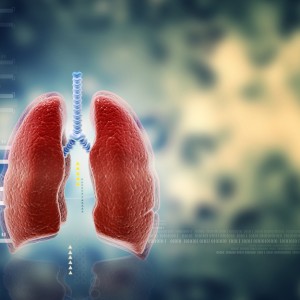 In a recent study entitled “Forced oscillations and respiratory system modeling in adults with cystic fibrosis,” authors evaluated changes in lung function in adult Cystic Fibrosis patients using a test called Forced Oscillation Technique (FOT), showing its efficacy in detecting changes in their respiratory system. The study was published in the journal BioMedical Engineering OnLine.
In a recent study entitled “Forced oscillations and respiratory system modeling in adults with cystic fibrosis,” authors evaluated changes in lung function in adult Cystic Fibrosis patients using a test called Forced Oscillation Technique (FOT), showing its efficacy in detecting changes in their respiratory system. The study was published in the journal BioMedical Engineering OnLine.
In the study, a research team aimed to determine changes in the respiratory system — specifically in lung function — of patients affected by Cystic Fibrosis. The rationale behind the study is the increasingly recognized morbidity and mortality (with a rate of 85%) in Cystic fibrosis patients due to pulmonary disease. To this end, the team analyzed patients’ performance using the Forced Oscillation Technique (FOT) test, a detailed approach that helps define the mechanical properties of the respiratory system and lung function. FOT is easy to implement and allows researchers to determine the specifics of anatomical or pathophysiological parameters in respiratory diseases. However, FOT has never been used to evaluate lung function in CF adult patients.
The researchers applied the FOT test to a group of 27 adults with Cystic Fibrosis and in a control group of 23 healthy individuals. Aside from using FOT, the team also evaluated patients and controls by plethysmography (measures how much air you can hold in your lungs) and spirometry (measures the amount (volume) and/or speed (flow) of air that can be inhaled and exhaled).
[adrotate group=”9″]
The team observed, in agreement with previous studies, that adult Cystic Fibrosis patients are prone to obstructive airway disease. Specifically, Cystic Fibrosis patients exhibited a significant increase in RV (residual volume) and the RV/TLC ratio (residual volume per total lung capacity), when compared to controls. As a result, adults with Cystic Fibrosis have increased respiratory resistance, i.e., higher resistance from the respiratory tract to airflow during inspiration and expiration, accompanied by a decrease in the homogeneity of ventilation throughout the lungs and lung compliance (the ability for lungs to stretch and expand).
The authors highlight that these alterations were successfully detected by combining the FOT with the eRIC model. Therefore, FOT, the team suggests, is a new complementary approach to measure and follow pulmonary function in adult patients with Cystic Fibrosis.

